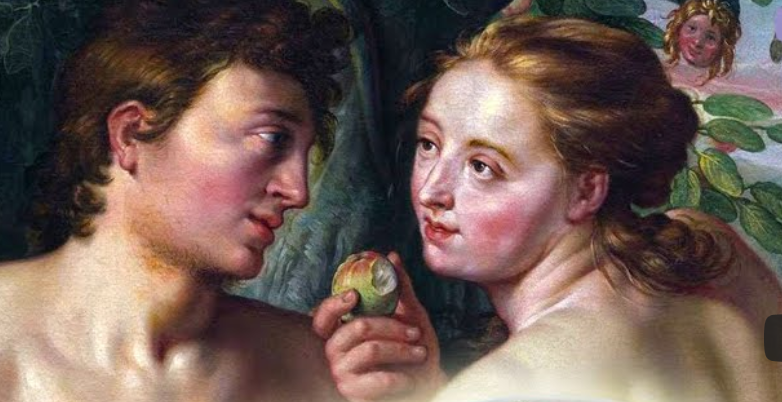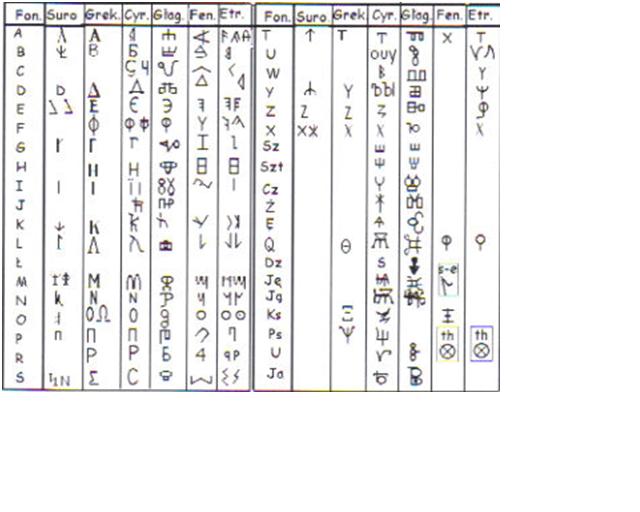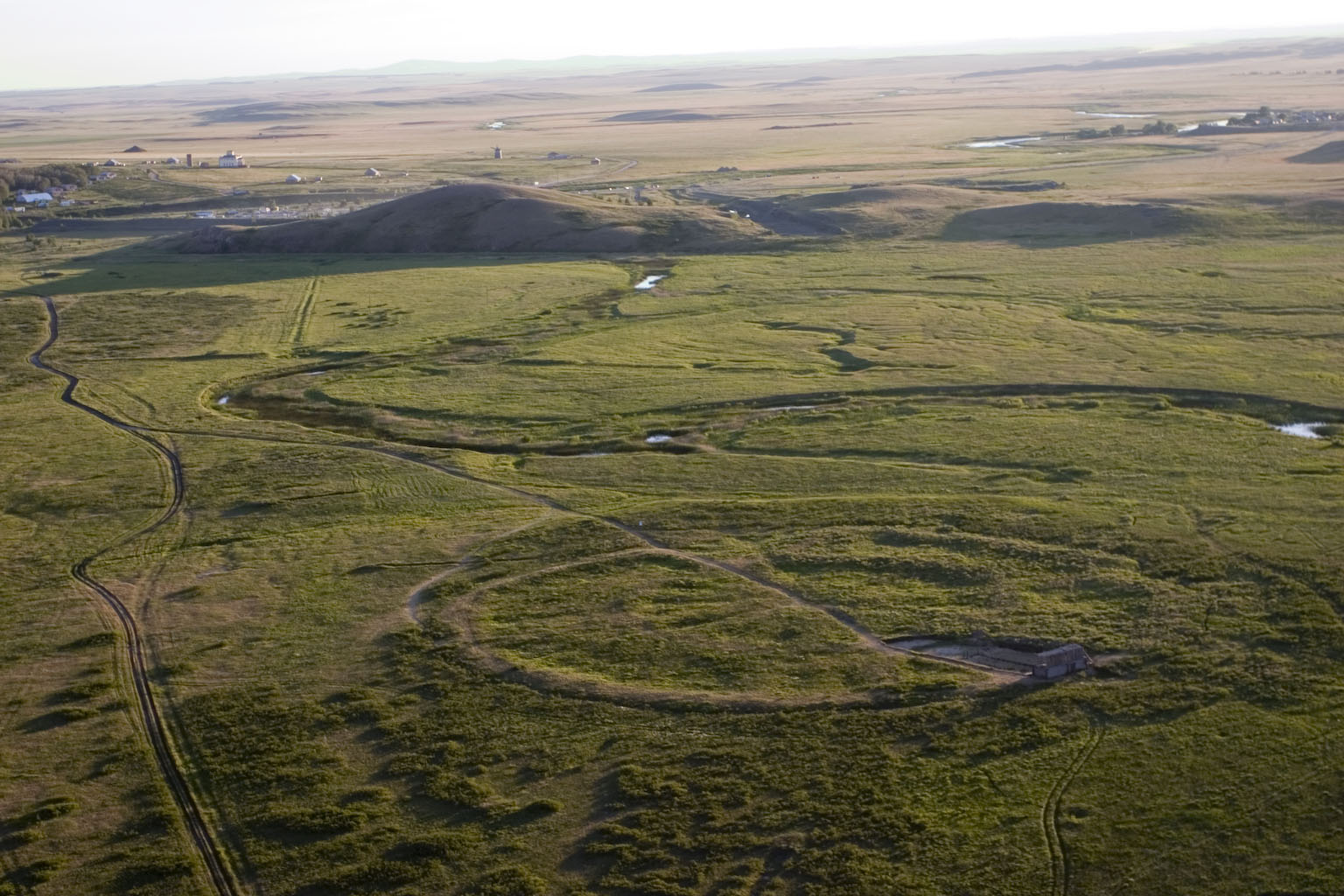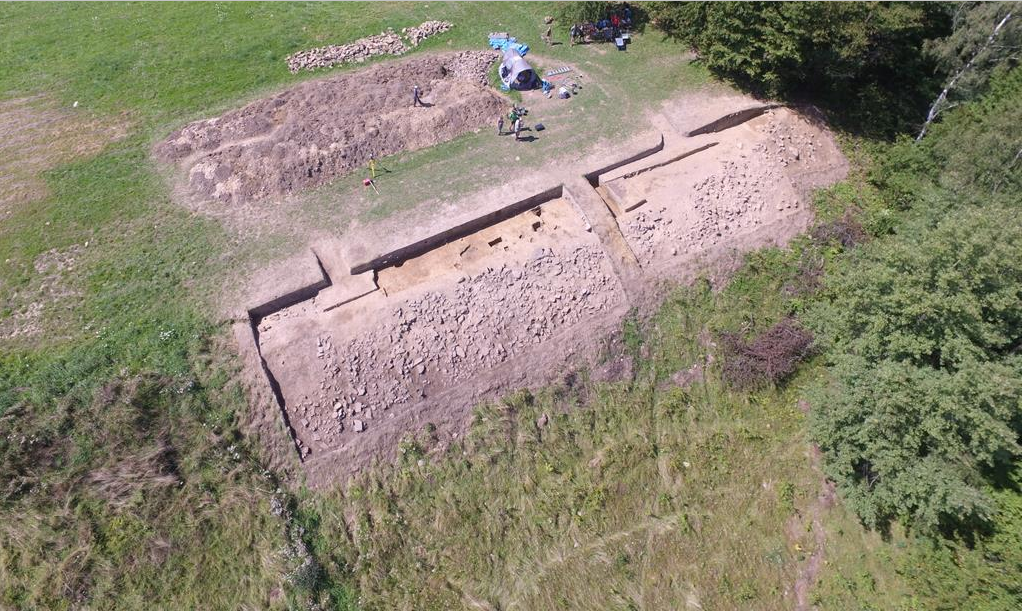Księga Sakralnych Absurdów – Księga Rodzaju cz. 3; Dekalog

Some Remarks on the Scythian and Sarmatian Religion, Symbols etc. (Sergei V. Rjabchikov Krasnodar, Russia)
Some Remarks on the Scythian and Sarmatian Religion
Sergei V. Rjabchikov
Krasnodar, Russia
<srjabchikov@hotmail.com>
Copyright � Sergei V. Rjabchikov, 2002. All rights reserved.
Published 18 April 2002 Last posted 02 January, 2005
Here I investigate several Scythian/Sarmatian artifacts and religious inscriptions. Besides, parallels from the Slavonic world are offered.
FIGURE 1
![]()
The first sign corresponds to the early Slavonic letter zh (Rjabchikov 1998a: 23, table 1; 1998b: 5-6, table 1). The same sign is presented in a Scythian/Sarmatian record on a Greek vessel of the 4th century B.C that was discovered at the village Starotitarovskaya, the Taman� peninsula (the Krasnodar region, Russia) (Rjabchikov 2000a). The second sign represents four lines and denotes �four�. A kindred sign � three lines � denotes �three� in the Starotitarovskaya inscription. The third sign corresponds to Scythian/Sarmatian signs 09 se inscribed in particular on two weights of spinning-wheels from the Kingdom of the Bosporus that are exhibited in the Taman� Archaeological Museum (the village Taman�, the Krasnodar region, Russia) (1). So one can suppose that the Scythians and Sarmatians used not only the syllabic script based on Linear A (B) (Rjabchikov 2000b), but also the letters of the Greek alphabet as well as some syllables and determinatives. Two marks of the Scythian coffin are combinations of letters TA and TM. It is possible that they are the Scythian/Sarmatian words ta, tama meaning �the sun; fire� and �darkness� respectively (Rjabchikov 2001a). In my opinion, these words are related to the Scythian religious beliefs.

Waga i tajemnica głagolicy to rzecz niedoceniona w badaniach nad przeszłością i nadal obecnie traktowana nieco po macoszemu w przyglądaniu się Słowiańszczyźnie. Może dlatego, że jest to wiedza trudna, wiedza o przekładaniu się fraktalu Tego Na Górze, na fraktal dźwięku, mowy i zapisu, swoiste przymioty Człowieka, Najdoskonalszego Tworu Obecnej Ewolucji na Matce Ziemi. Badacze tej dziedziny mają jeszcze bardzo wiele do zrobienia.
(Moje Archiwum – 2009): Emanacje bogów w tynie Pogody-Wonieji
Zapach – w najogólniejszym sensie cecha związków chemicznych i ich mieszanin, polegająca na pobudzaniu zmysłu węchu.
W języku polskim zwykle przez zapach rozumie się woń przyjemną, aczkolwiek używa się tego słowa również w sensie każdej woni, zarówno przyjemnej, obojętnej jak i przykrej. Przykre zapachy przyjęło się nazywać smrodem, odorem lub fetorem.
Obraz przypomina łatwo zapachy ale pod warunkiem, że się da z nimi skojarzyć
Weń to zwieńczenie, czyli zapach powietrza. Inaczej pachnie powietrze po deszczu, inaczej w zimie, inaczej gdy jesienią rozkładają się liście. Jak wiadomo powietrze jest domeną Pogody, i weń oraz woń także jej przynależą. Słowo weń i woń ma ten sam rdzeń – identyczny jak w słowie wieniec, bo woń jest swoistą nadbudową Świata, upiększającym go dodatkiem, ale dodatkiem niezbędnym.

Książka Leszka Słupeckiego ma już wiele lat, a wciąż mamy w Polsce masę ludzi, do których nie dotarła informacja, że istnieje w Polsce wiele śladów i pozostałości po pogańskich świątyniach i sanktuariach. Uświadamia mi to, że posiadam w moim domu istną kopalnię podobnych pozycji, które nadal są niedostępne do przeczytania w polskich cyfrowych bibliotekach państwowych – uniwersyteckich, ale też przede wszystkim w tych dwóch największych – Narodowej w Warszawie i Bibliotece Jagiellońskiej. Od czasu do czasu postaram się tutaj opublikować więc także jakiś dokument, z tych które posłużyły mi przy odtworzeniu Mitologii Słowian, a o których istnieniu nie mają pojęcia nawet niektórzy światli i oczytani polscy Rodzimowiercy, tacy jak choćby pan Merski organizujący z Fundacją Związku Watra bardzo pozytywną inicjatywę budowy świątyni słowiańskich bogów.
Często wkurza mnie niewiedza Polaków, ale skąd mają wiedzieć? Czy „Mify Narodow Mira” wielkie dwutomowe, monumentalne opracowanie naukowe wydane przez Moskiewską Akademię Nauk, a opracowane przez największe autorytety światowego słowianoznawstwa i religioznawstwa, są dostępne w Internecie? Oczywiście, że nie. A poza tym kto z młodego pokolenia umie czytać, czy mówić po rosyjsku? Te dwa opasłe tomiska kurzą się na mojej półce. A kto ma dostęp do Słownika Starożytności Słowiańskich – monumentu Polskiej Akademii Nauk w XIII tomiszczach. To też się kurzy u mnie na półce. Biję się w piersi – niewiedza tych ludzi to również moja własna wina. Postaram się to nadrobić.
Tadeusz Mroziński o głagolicy i bukwicy na Konferencji Językowej w Ochrydzie
KONFERENCJA JĘZYKOWA W OCHRYDZIE
Česká republika, 155 00 Praha 5-Stodůlky, Neustupného 1830/26
Уважаемые коллеги !
В соответствии с договоренностью Всеславянского комитета сМеждународным славянским университетом им. Державина в г. Свети Николе (Македония) и решением Президиума Всеславянского комитета от 18 сентября 2015 г., позвольте мне пригласить Вас на
Международную научно-практическую конференцию на тему
«Секреты славянской письменности»,
посвященную 1 100 годовщине со дня кончины св. Климента Охридского,
которая состоится с 23 по 25 мая 2016 г. в гостинице СИЛЕКС 4*
Нас.Св.Стефан , г. Охрид, Македония, тел.++389 46 277 300, info@hotelsileks.mk
Vážený pane Mroziński,
děkuji z Váš zájem zúčastnit se naší konference na Ochridu. V příloze
posílám vše nezbytné. Poslední stránku mi, prosím vyplněnou pošlete zpět.
Další podrobnosti obdržíte.
S pozdravem
Zdeněk Opatřil
O turbokatolickim rozdwojeniu jaźni i wielkiej „sarmackiej” ofensywie KK( część 03
 Stanowisko archeologiczne Arkaim, założone na planie koła z widocznymi wałami ziemnymi
Stanowisko archeologiczne Arkaim, założone na planie koła z widocznymi wałami ziemnymi
NAUKA): A.D.P. Lasso – Odkrycie zaginionego ogniwa pochodzenia języka łacińskiego
(Wstęp pochodzi z roku 2014, a więc zapoznałem się z tym artykułem w czerwcu roku 2011, niemal 6 lat temu, każdemu więc kto tego nie zna polecam, bo to dowody naukowe na pochodzenie alfabetu łacińskiego i run oraz innych późniejszych rodzajów pisma od pisma prasłowiańskiego, czyli alfabetu Vincza) CB
Przedstawiam bardzo ciekawy tekst, z którym zapoznałem się dawno, 2 i pół roku temu, zaraz jak tylko został zamieszczony w Internecie. Jest to tekst będący fragmentami z blogu: http://hesperyd.blogspot.co.uk/2011/03/odissea.html
Wtedy odłożyłem go na bok, nie znałem jeszcze prac Winicjusza Kossakowskiego, a problem pisma nie był jakimś centralnym zagadnieniem, nad którym pracowałem, więc uszedł mojej uwadze. Potem link gdzieś się zagrzebał i do teraz, do maja tego roku, sprawa leżała odłogiem. Kwestia pisma wraca jednak nieustannie jako jedna z wielkich zagadek Północnej Cywilizacji, która odżegnała się od zapisu zostawiając jakby pismo do „obsługi” tylko jednej funkcji Świętego Zapisu Taj. Ten ewidentnie widzialny w Barbarii zakaz posługiwania się pismem rytym obowiązujący przez długie stulecia w Warwarii-Wharatcie-Harcie-Harharii-Sistanie ma swoje głęboko mistyczne źródło, o którym nie czas jeszcze mówić i pisać, bo to domysły niezbyt uprawdopodobnione. Owo źródło jednak istnieje bez wątpienia i świadomość jego istnienia nie dawała mi nigdy spokoju. Wciąż jest dla mnie nie do końca zgłębioną zagadką.
Zachęcam wszystkich do przeczytania pełnego tekstu na tym blogu. Nie zrobiłem tutaj redakcji poprawności w języku polskim, tekst jest tłumaczony z języka włoskiego i zawiera czasami niewłaściwe konstrukcje w języku polskim, ale to nie jest najważniejsze. Ważne, że mamy tutaj zarysowany sensowny obraz rozwoju pisma łacińskiego z uwzględnieniem prasłowiańskiej Kultury Naddunajskiej Vinca jako źródłowej dla tego i innych alfabetów runicznych. Oczywiście mechanizm tworzenia alfabetu, jaki przedstawia autor, moim zdaniem nie jest jedynym- równie prawidłowa może być taka motywacja znaków jaką przedstawia Winicjusz Kossakowski – nazwałbym ją psycho-fizjologiczną, bo znaki powstają też według niego jako schematyczny rysunek warg, języka i krtani ułożonych w charakterystyczny sposób podczas wymowy głosek. Jedno nie wyklucza drugiego gdyż i jedno i drugie zawiera się w naturze fraktalnej Wszechświata i jest powtórzeniem fraktalu na innym poziomie odniesienia. Nie wyklucza to też wcale równocześnie występującej motywacji znaków pisma zawartej w głagolicy – którą nazwałbym motywacją kosmiczną. Jest to wszak znów odwzorowanie tego samego fraktalu w skali super-makro. Jak dobrze wiemy „jako na górze tako na dole” zatem te wszystkie składniki odbite w strukturze alfabetów nie powinny wcale dziwić. Stanowią one jednak niezbite potwierdzenie istnienia owej zasady.
Przejdźmy teraz do pracy włoskiego naukowca przetłumaczonej na stronie: http://hesperyd.blogspot.co.uk/2011/03/odissea.html
Na św. Mikołaja: Księga Sakralnych Absurdów – Księga Rodzaju cz. 2

Przypomnę tylko, że wykład „Fenomen bluźnierstwa” to jest tekst z roku 2012, który jak dobre stare wino nabiera z czasem coraz większego smaku i mocy – Daleko było wtedy do wojny Putina i rządów katopolaków z PIS w Polsce. Przypomnę też, że Islandia jako jedyny kraj europejski oficjalnie zlikwidowała przepisy prawa dotyczące bluźnierstwa w jakiejkolwiek formie. Mówi ateista, ale przez to jego przemyślenia i odkrycia nie tracą na wartości.
Wyjątkowy dom sprzed blisko 4 tys. lat odkryto w Maszkowicach


Badania wykopaliskowe w 2016 r. w Maszkowicach. Fot. M. S. Przybyła
Wyjątkowy dom i pozostałe chaty znajdujące się w obrębie osady, które archeolodzy odkryli w czasie tegorocznych badań, chroniony był przez najstarszy znany na ziemiach polskich monumentalny, kamienny mur. Na jego doskonale zachowane relikty badacze natknęli się już w 2011 r., ale dopiero w zeszłym roku udało się im dokładnie określić jego wiek na blisko 4 tys. lat, co stało się sensacją w świecie archeologicznym.